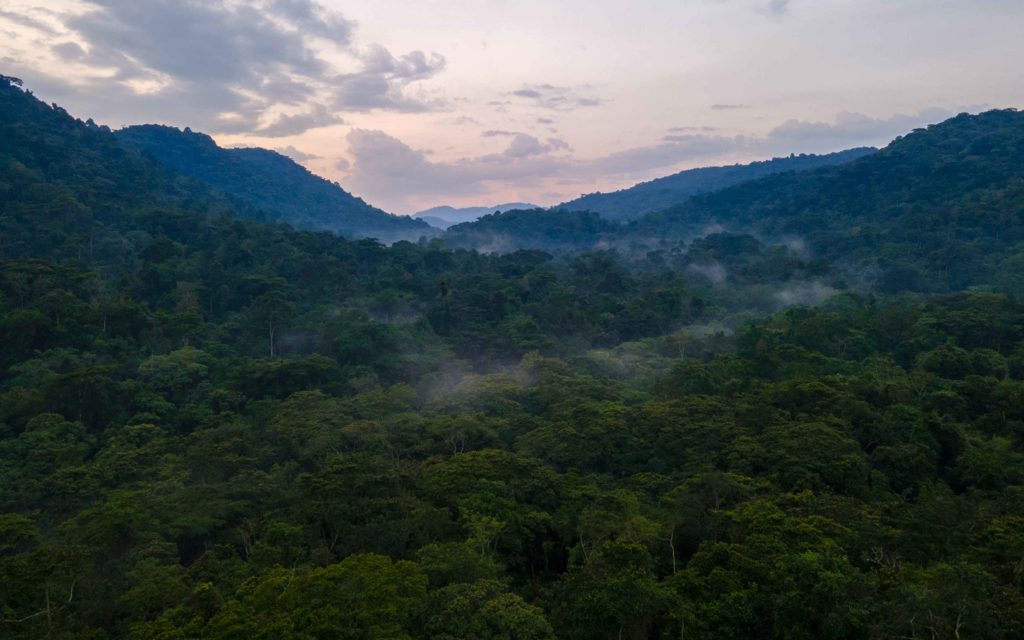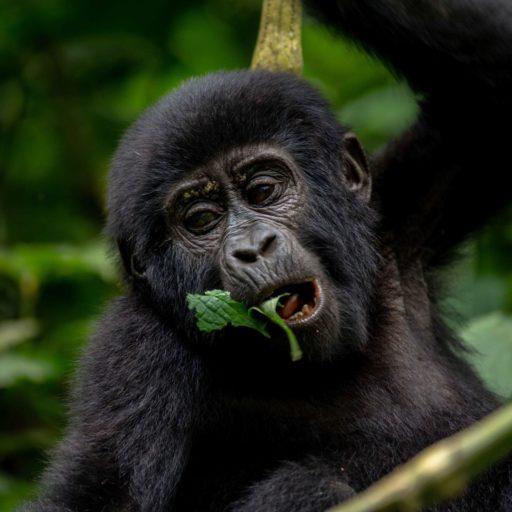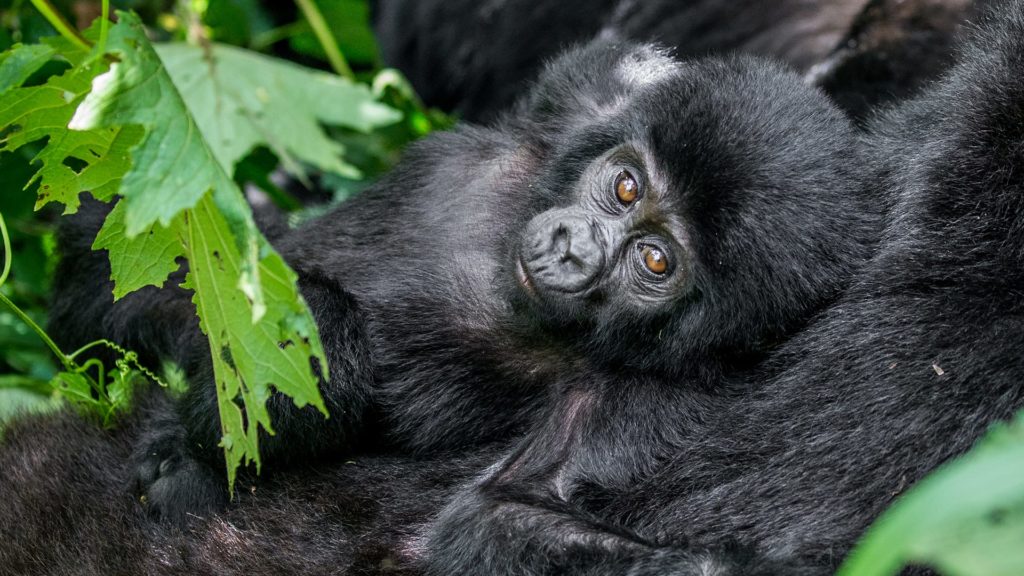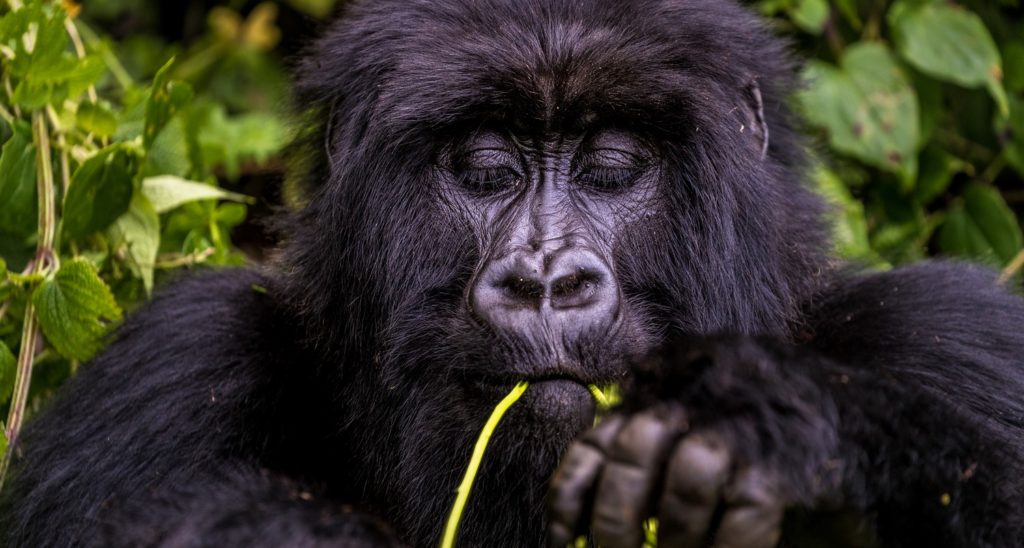Bwindi Impenetrable Forest National Park
Is one of UNESCO heritage sites best known for its Mountain Gorilla populations and gorilla tracking although, it also offers some of the finest montane forest birding in Africa and is a key destination for any birder doing a Safari to Uganda. Amongst the numerous possibilities are no fewer than 23 of Uganda’s 24 Albertine Rift endemics, including spectacular, globally threatened species such as Shelley’s Crimson wing and the African Green Broadbill. Bwindi is one of the few national parks in Africa to have flourished throughout the last Ice Age and it is home to roughly half of the world’s mountain gorillas.
Though it is best known for its outstanding gorilla tracking, it also provides refuge to elephant, chimpanzee, monkeys and various small antelope and bird species. The variant biodiversity is supported by the fact that Bwindi is extremely old and also its slopes extend over a broad altitudinal range of 1447m above sea level, enabling habitats ranging from lowland forest to Afromontane vegetation.
Location of Bwindi Impenetrable Forest National Park
Bwindi Impenetrable Forest National Park is found in southwestern Uganda on the edge of the western arm of the Great East African Rift Valley, about 530km from Uganda

Size of Bwindi Impenetrable Forest National Park
The park occupies the size of about 321 sq km. This park is divided into four gorilla tracking sectors including Buhoma, Ruhija, Rushaga and Nkuringo sectors;
The Buhoma sector was the first to be developed for gorilla tracking safaris in Uganda and is the most popular of all the four sectors. It is at this sector where other walks have been developed including; the Munyanga River Trails in the valley of Buhoma, which is a short walk for viewing birds and primates along the forest edge.
The waterfall trail which passes beneath tree ferns, epiphytic ferns as well as orchids to visit three dazzling waterfalls. The Rushura Hill Trail, Muzabajiro Loop Trail and the River Ivi Trail of which the latter follows an old raod through the forest, emerging near Nkuringo on the southern edge of the impenetrable forest. The Buhoma community walk and cultural performances which takes up to three hours visiting a typical homestead, the traditional healer and a banana beer brewery is organized by the local community. Of recent, the Batwa cultural experience has been developed in this section of the park. Gorilla families in this sector include; Rushegura, Mubare and Habinyanja.

The Nkuringo sector which lies closely to the Buhoma sector is about 10km from Buhoma although this distance is covered by the Impenetrable Forest and a walk through the forest takes about 4 hours. Connecting by the car from the two points takes about 7 to 8 hours. Villages at Nkuringo also operate a community walk that visits a traditional healer, rural homestead, blacksmith and brewers. Nkuringo gorilla family is the only family in this sector.
The Ruhija sector which is famous for its abundant birdlife on top of the gorillas is considered the most remote sector of all the four. There is a three hour hike to visit the Mubwindi swamp and this rewards birder lovers with countless bird species. Gorilla families in this sector include; Ruhija, Bitukura and Kyaguriro.
The Rushaga sector boasts the highest number of gorilla family to include; Mishaya, Nshongi, Kahungye, and Busingye. It lies between Kabale and Nkuringo coming from either Ruhija or Kampala.
Getting there
Bwindi can be accessed either by air from Entebbe Airport or Kajjansi Airstrip or by road from Kampala.
From Entebbe, there are scheduled flights to Kihihi which is close to the northern sector of Bwindi and also flights to Kisoro which is close to the Southern sector of Bwindi. Flights to Kisoro only leave in the morning while Kihihi has both morning and afternoon departures from Entebbe. You can also do charter flights from Kajjansi Airstrip to either Kisoro or Kihihi.
By road, there are alternatives that include;
Kampala-Kabale-Kanungu-Buhoma which follows a tarmac highway until Kabale for about 414km spending about 6-8 hrs and then connect on a murram road through Kanungu and Kanyantorogo for about 120km to Buhoma. For the latter route, it is highly recommended to have a 4WD vehicle and this journey can take about 4-5 hrs.
Kampala-Kabale-Ruhija-Buhoma which follows the same route as the above first option except the Kabale-Ruhija-Buhoma section is about 95km on a murram road and can take about 3-4 hrs also highly recommended to have a 4WD vehicle.
Kampala-Kabale-Nkuringo also follows the same as the above routes to Kabale and an additional 105km about 4-5 hrs drive on a mountainous murram road to Nkuringo from Kabale. Some people prefer spending a night in Kisoro which is about 80km from Kabale and in the morning proceed to Nkuringo for gorilla tracking.
Kampala-Ntungamo-Rukungiri-Kihihi-Buhoma is regarded as the quickest and most direct of all the routes from Kampala and follows a tarmac rout to Rukungiri about 390km followed by murram roads to Buhoma for about 82km.
There is also a route that goes through Queen Elizabeth National Park via Kihihi and to Buhoma passing through the Ishasha sector of Queen Elizabeth National Park famed for the tree climbing lions. Sometimes this route is not favoured because of the bridge which keeps on breaking down.
What to do in Bwindi Impenetrable Forest National Park
The major activity in Bwindi is; Gorilla tracking limited to a maximum of 8 people per particular gorilla group per day – Permits must be booked before since they are on a very high demand all year round. You can do this by getting in touch with Uganda wildlife Authority or contacting your local Uganda safari Operator for advice.
Guided forest walks, birding and other primates viewing. There is also the interesting activity of the people (Batwa Pygmies) whereby recently the Batwa Cultural Experience was introduced.
When to visit Bwindi Impenetrable Forest National Park
Uganda is suitable for travel any time of the year, but not advisable during rainy seasons. Uganda is sunny most of the year with temperatures rarely rising above 29 degrees (84 degrees Fahrenheit). The average annual temperature is about 26 degrees Celsius (78° Fahrenheit).
The rainy season is from March till May and October till November. Light rain season falls in November and December. Dry seasons are from December to February and June to August. The best time, the best months of the year would be December to late February and from June to September.
Gallery






